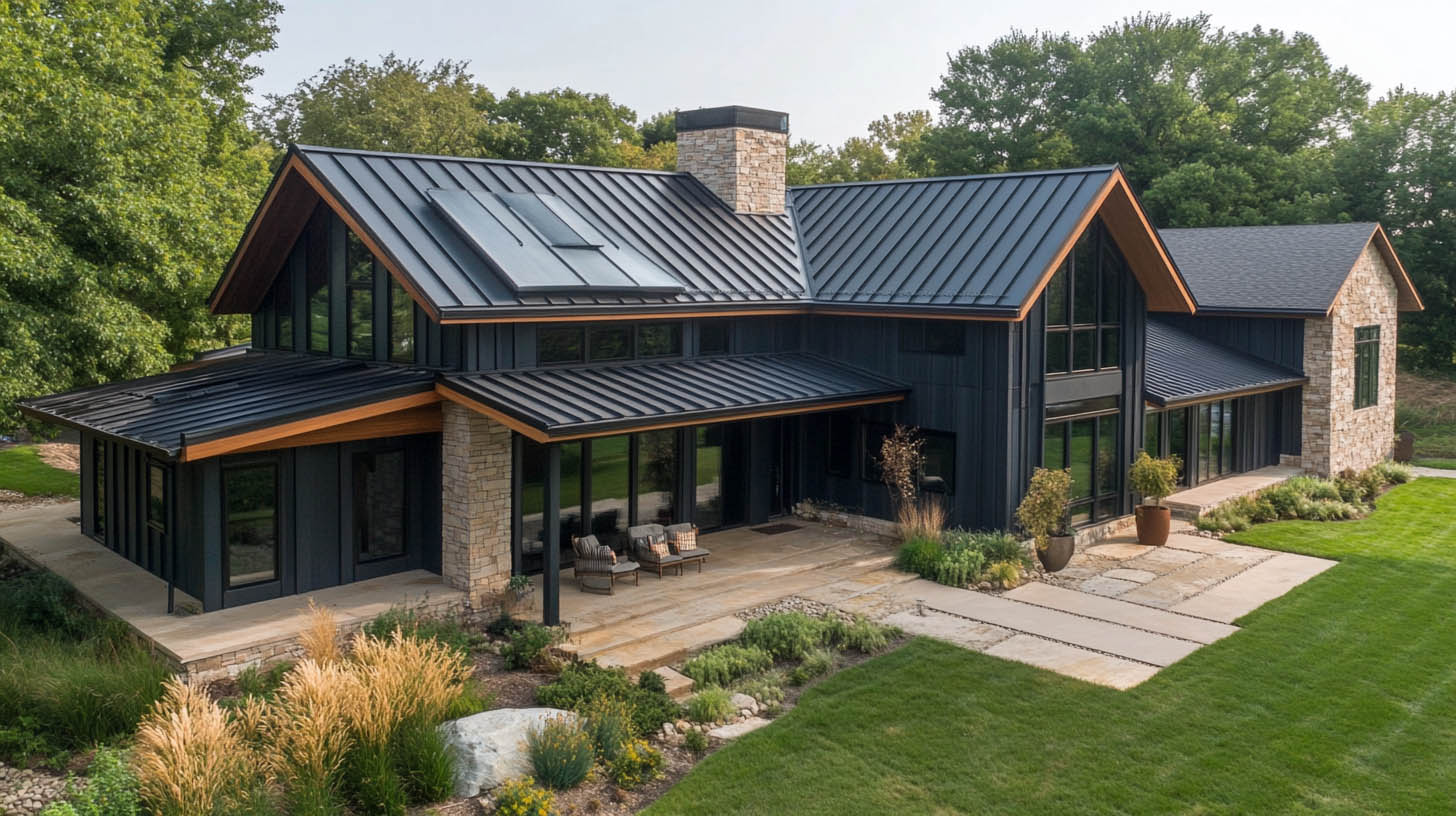
Selecting the right metal roofing material is a critical decision that affects the longevity, aesthetics, and durability of your roof. At Rainstoppers Roofing, located in Charleston, WV, we guide homeowners through this process to ensure they make informed choices for their unique needs.
Factors That Influence Metal Roofing Choices
1. Budget and Initial Costs
Your budget significantly impacts the type of metal roofing material you can afford. While copper and zinc roofs are premium choices due to their longevity and aesthetics, they may not fit every homeowner’s financial plan.
- Cost vs. Longevity: Investing in high-quality materials like steel may save money on repairs over time.
- Affordable Options: Aluminum and tin are budget-friendly alternatives for those looking to reduce upfront costs without sacrificing quality.
2. Local Climate and Weather Resilience
The environmental conditions in your area dictate the durability of your roofing material.
- Snow and Rain: Steel roofs excel in regions with high precipitation due to their ability to resist corrosion and handle heavy snow loads.
- Heat and Sunlight: Aluminum reflects sunlight effectively, making it a popular choice in hot climates.
Unique Fact: Steel roofs designed to withstand wind speeds up to 140 mph, making them ideal for hurricane-prone areas.
3. Maintenance Needs
Different metal roofing materials demand varying levels of upkeep. Homeowners should consider how much time and resources they can allocate to maintenance.
- Self-Healing Properties: Zinc has a natural patina that repairs scratches over time, reducing the need for frequent maintenance.
- Regular Cleaning: Materials like copper and aluminum require occasional cleaning to maintain their appearance.
4. Aesthetic Appeal and Compatibility
Metal roofs offer versatile design options to complement various architectural styles. Homeowners can choose from a range of finishes, colors, and textures.
- Copper: Ideal for historic homes due to its timeless appeal and natural aging process.
- Steel and Aluminum: Available in a variety of coatings to mimic wood or traditional shingles.
Common Types of Metal Roofing Materials
- Steel: Durable and cost-effective, with high resistance to weather damage.
- Aluminum: Lightweight and corrosion-resistant, perfect for coastal regions.
- Copper: Luxurious and long-lasting, but comes with a higher price tag.
- Zinc: Low-maintenance with eco-friendly properties, offering excellent longevity.
Conclusion
Choosing the right metal roofing material requires careful consideration of budget, climate, maintenance needs, and aesthetics. Rainstoppers Roofing, a GAF Master Elite and ABC Platinum Contractor, offers expert guidance to help you find the best solution for your home.
FAQs
1. Is metal roofing suitable for all climates?
Yes, but specific materials perform better in certain climates. For instance, steel is ideal for snowy areas, while aluminum is better suited for hot or coastal environments.
2. How long do metal roofs last?
With proper installation and maintenance, metal roofs can last 40–70 years, depending on the material.
3. Are metal roofs energy-efficient?
Yes, many metal roofs reflect solar heat, reducing cooling costs in warm climates.
4. What is the most cost-effective metal roofing material?
Aluminum offers a good balance of affordability, durability, and corrosion resistance.
5. Can I install solar panels on a metal roof?
Absolutely. Metal roofs are one of the best options for supporting solar panel installations.
If you want to read a blog about common misconceptions about commercial flat roofing in snowy conditions, click here.
